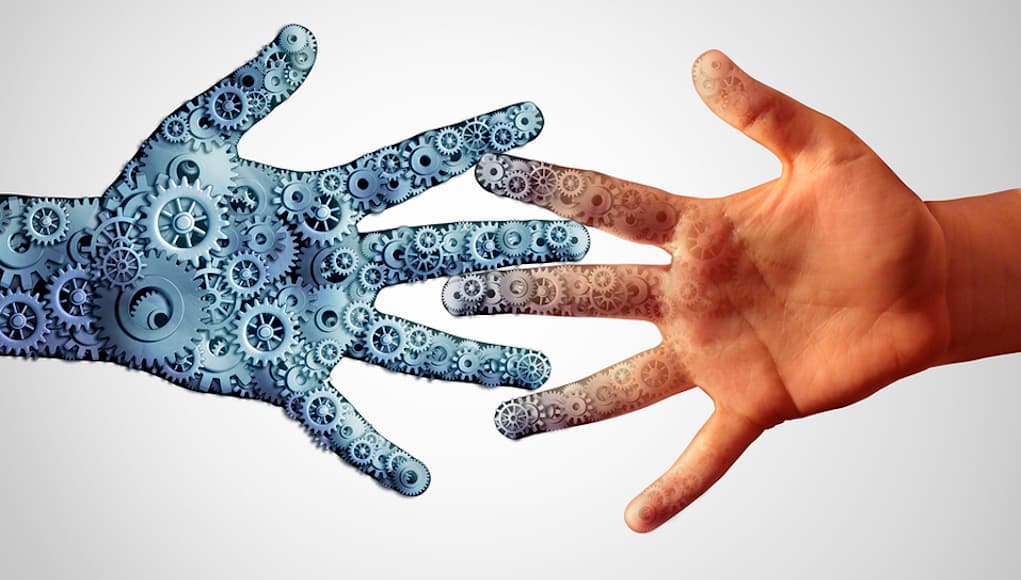You’ve Heard Computers Have Low EQ, Not Anymore

By: Tom Vander Ark and Vic Vuchic
You’ve heard that computers don’t understand human emotions well, so people should focus less on basic skills and more on social and emotional learning. It’s a prevalent narrative but it just isn’t true anymore.
Artificial intelligence (AI) is actually already brilliant at understanding and engaging (even manipulating) people’s emotions and social interactions in powerful ways.
Facebook is a giant social and emotional learning engine. Facebook has many of your emotional memories (your photos and videos), it knows who you care about socially (your friends that you interact with), and it knows what you prefer (by what you “like”). It brings these three things together at an incredible scale to decide what goes into your feeds to engage you both socially and emotionally. Exhibit one is the personalized movie of 2018 memories you received last week. The AI engine knew to prioritize kids, meals with friends you interact with a lot and sunsets to engage your emotions and keep your attention. Judging by the hours and hours that over a billion people spend on Facebook, it does a pretty good job of engaging people’s emotions!
Google photo curates “great memories” videos and it knows that a video of a baby taking first steps will bring more joy than the photo of a cereal box taken for a shopping list. YouTube knows how you’ll you’ll smile and laugh at a cat video and recoil in horror at child abuse.
Microsoft built XiaoIce, the most popular social chatbot, with the personality of an 18-year-old Chinese girl who is reliable, sympathetic, affectionate, and has a wonderful sense of humor. XiaoIce is “an AI companion with which users form long-term, emotional connections”, Microsoft researchers explain in a new paper.
The good news is that AI is and will be used for tremendous good. AI is improving treatments for military veterans experiencing PTSD and children that have experienced trauma. AI will help detect underlying emotional difficulties that may be driving health issues and guide them in better more holistic treatments.
Breakthroughs in EQ
Rapid advancements in AI and enabling technology have dramatically improved machine EQ. There are more cameras and sensors that capture larger data sets. With faster processing and bigger data sets, voice and facial recognition have improved. Enormous global social media networks have been able to test their way to deep motivational understanding, particularly around persistence.
AI is smart but in narrow slivers of EQ today. “Making agents interact comfortably with humans is a substantial challenge for AI developers.” That’s one of the five big ideas from AI4K12, a group of academics led by Dave Touretzky from Carnegie Mellon. Comfortable interaction requires conversing in natural language, recognizing emotional states, and inferring intentions from observed behavior.
While AI has a ways to go to interact comfortably with humans, it already is communicating and interacting emotionally with people in millions of other ways (e.g., all the feeds on your smartphone, gaming systems, fitness trackers). Just because it’s not a human representation doesn’t mean it’s not engaging with you emotionally.
“We humans care deeply about how others see us – and the others whose approval we seek will increasingly be artificial,” said Judith Donath at Harvard University’s Berkman Klein Center for Internet & Society.
“Aided by their access to vast troves of data (our photos, our “likes”, our friends, our habits and preferences, our voice patterns…etc) about each of us, bots will far surpass humans in their ability to attract and persuade us,” added Donath.
How to Prepare?
The notion that AI won’t be good at recognizing and engaging human emotions is already history. So the simple notion of getting good at stuff the computers don’t do, like EQ, isn’t very good advice anymore.
However, building emotional intelligence will only grow in importance–but now it will be learning to read cues from and build productive relationships with diverse groups of people across disciplines as well as leveraging and integrating smarter AI driven technologies in new ways.
Digital discernment is increasingly important including understanding the positive and negative ways AI can impact people and society. The AI4K12 team said, “Students should understand that the ethical construction of AI systems that make decisions affecting people’s lives requires attention to the issues of transparency and fairness.”
Going forward “the greatest set of questions will involve how perceptions of AI and their application will influence the trajectory of civil rights in the future,” said Sonia Katyal, co-director of the Berkeley Center for Law and Technology.
“Questions about privacy, speech, the right of assembly and technological construction of personhood will all re-emerge in this new AI context, throwing into question our deepest-held beliefs about equality and opportunity for all,” added Katyal.
Over the coming decade, society will become a web of AI systems that people interact with. Jack Clark, Strategy & Communications Director at OpenAI, wonders “Could we better align society with increasingly powerful AI systems by more deeply integrating a wider subset of society into the training and development of AI systems?”
For young people, this new era requires that they develop:
- Self, social, and algorithmic awareness: understanding themselves, their communities and how AI and algorithms work to be aware of how AI is curating and influencing the world they interact with and leveraging it to make better decisions, collaborate better with others and create new positive opportunities for people and communities
- Confidence in the face of complexity: developing design thinking, divergent thinking and problem-solving across disciplines for new open-ended situations;
- Ethics and initiative in the face of opportunity: learning entrepreneurship and how to ethically approach problems and shape impact opportunities including projects, campaigns, and startup organizations.
For more, see:
Vic Vuchic is Chief Innovation Officer at Digital Promise Global
This post is a part of the Getting Smart Future of Work Campaign. The future of work will bring new challenges and cause us to shift how we think about jobs and employability — so what does this mean for teaching and learning? In our exploration of the #FutureOfWork, sponsored by eduInnovation and powered by Getting Smart, we dive into what’s happening, what’s coming and how schools might prepare. For more, follow #futureofwork and visit our Future of Work page.
Stay in-the-know with innovations in learning by signing up for the weekly Smart Update.









0 Comments
Leave a Comment
Your email address will not be published. All fields are required.